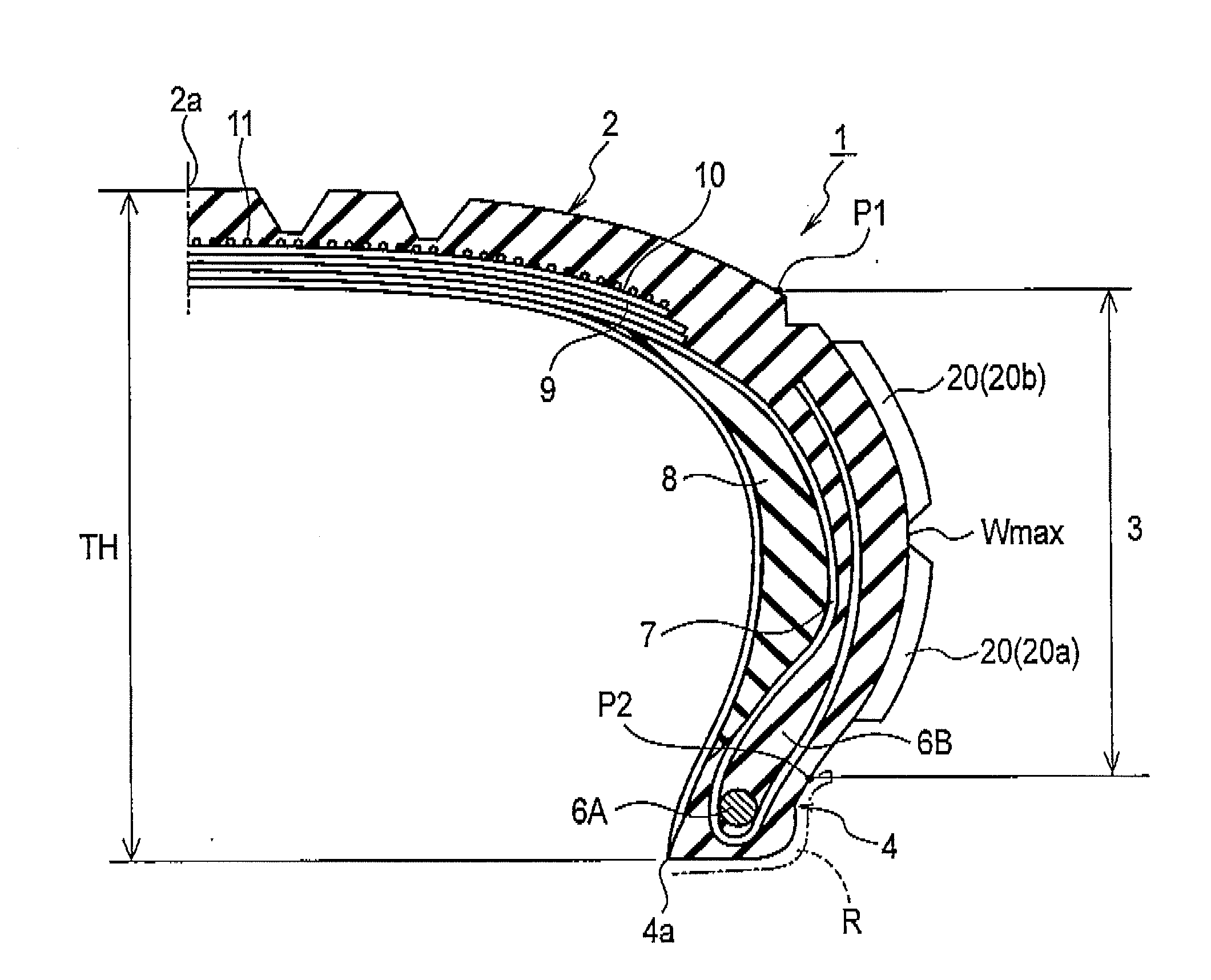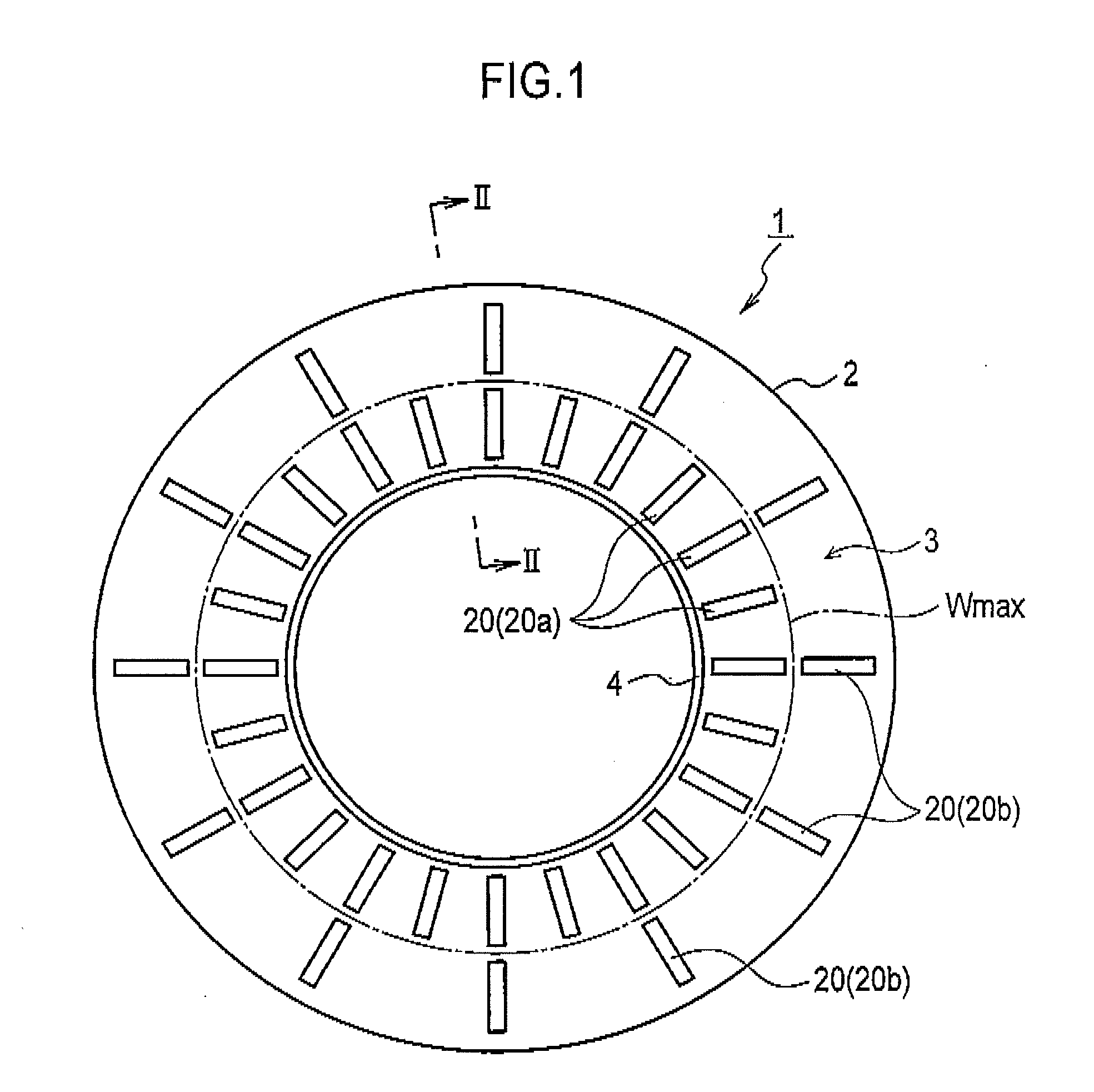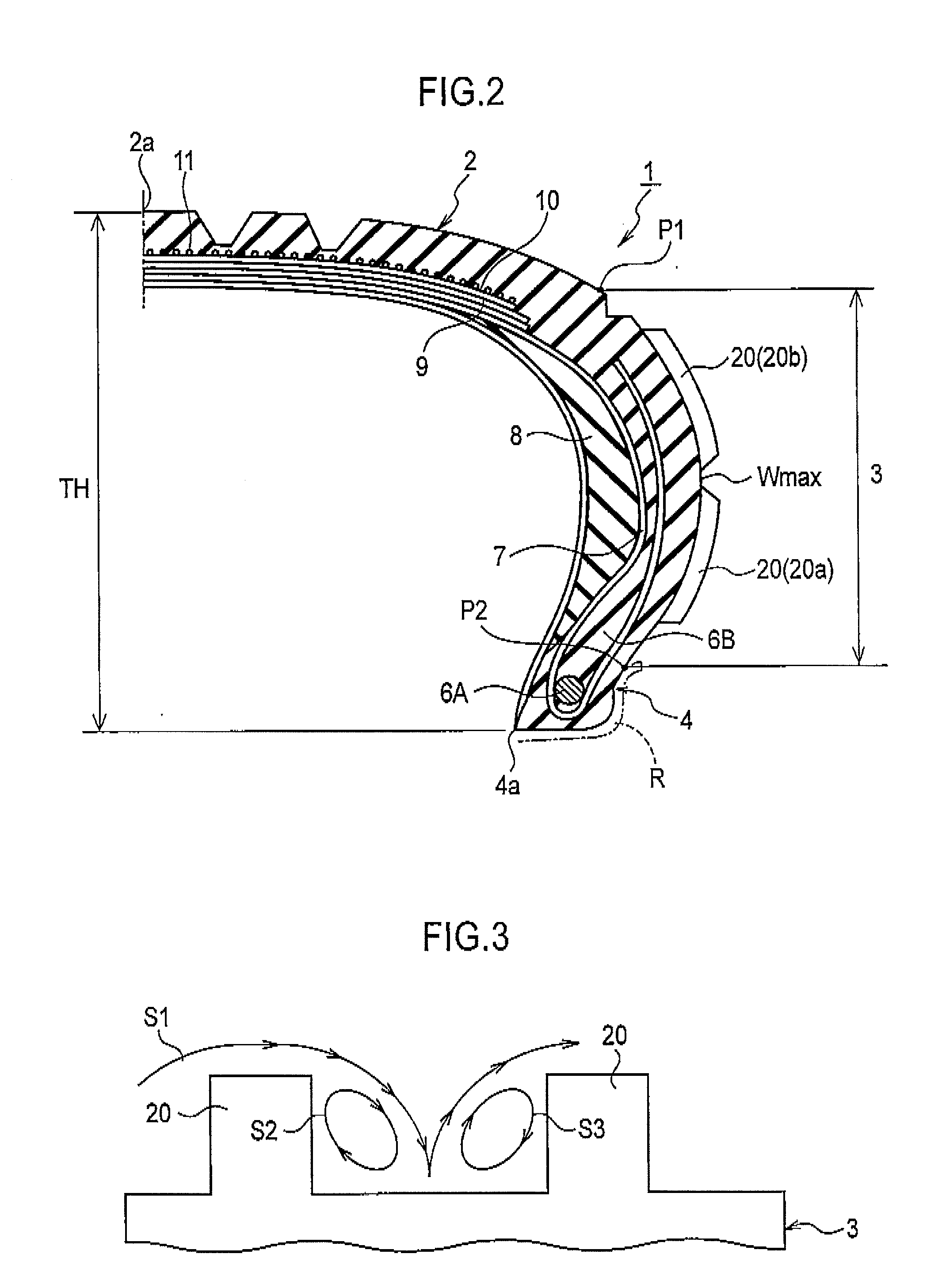Pneumatic tire
a pneumatic tire and tire side technology, applied in the field of pneumatic tires, can solve the problems of affecting the temperature rise of the pneumatic tire is not favorable in view of durability, and the use of the reinforcement member may exert adverse effects on the ordinary performance of the tire, so as to increase the travelling resistance, and reduce the temperature of the tire side
- Summary
- Abstract
- Description
- Claims
- Application Information
AI Technical Summary
Benefits of technology
Problems solved by technology
Method used
Image
Examples
embodiment 1
[0037]A pneumatic tire according to Embodiment 1 will be described in detail below by referring to the drawings.
[0038]FIGS. 1 to 4 illustrate a run-flat tire 1, which is an example pneumatic tire according to Embodiment 1, and principal portions of the run-flat tire 1. FIG. 1 is a side elevation view illustrating the run-flat tire 1. FIG. 2 is a sectional view illustrating a principal portion taken along the line II-II of FIG. 1. FIG. 3 is a sectional view of turbulence generation ridges taken along the tire-circumferential direction. FIG. 4 is a perspective view illustrating a principal portion showing an example arrangement of turbulence generation ridges positioned at the inner side, in the tire-radial direction, of the tire maximum width position and turbulence generation ridges positioned at the outer side, in the tire-radial direction, of the tire maximum width position.
[0039]As FIGS. 1 and 2 show, the run-flat tire 1 roughly includes a tread portion 2, tire side portions 3, a...
modified examples
[0070]In the run-flat tire 1 of Embodiment 1, the turbulence generation ridges 20 formed on the outer surfaces of the tire side portions 3 are classified into two groups: the inner-side ridges 20a positioned at the inner side, in the tire-radial direction, of the tire maximum width position Wmax; and the outer-side ridges 20b positioned at the outer side, in the tire-radial direction, of the tire maximum width position Wmax. In addition, there are more inner-side ridges 20a formed than the outer-side ridges 20b. A Variety of alternative, specific arrangement patterns for the inner-side ridges 20a and the outer-side ridges 20b are possible other than the example pattern shown in FIGS. 1 and 4.
[0071]One of such alternative patterns is shown in FIGS. 5 and 6. In the pattern, a ring-shaped connection portion 20c is formed on the outer-side surface of each tire side portion 3 so as to be adjacent to the corresponding bead portion 4. The plural inner ridges 20a arranged radially around th...
example case a
[0090]For the purpose of confirming the effect of the invention, run-flat tires of Examples 1 to 7 and run-flat tires of Comparative Examples 1 to 3 were fabricated in accordance with the parameters listed in Table 1. The prototypes thus fabricated were subjected to durability drum testing under the following conditions to evaluate the durability and the travelling resistance for each prototype. Table 1 shows the evaluation results.
TABLE 1ComparativeComparativeComparativeExampleExampleExampleExampleExampleExampleExampleExample 1Example 2Example 31234567nowithwithwithwithwithwithwithwithwithParameterridgesridgesridgesridgesridgesridgesridgesridgesridgesridgesSum of—10040100100100100100100100SidewallAreas ofInner-SideRidges (Si)Sum of—10010050809030205040SidewallAreas ofOuter-SideRidges (So)So / Si (%)10025050809030205040Maximum—222222222Height h(mm)p / h of—123012121212121212Inner-SideRidgeProportion—1.31.32.61.61.44.36.42228of MaximumAreaWithoutOuter-SideRidge (%)RFT Drum501207810911611...
PUM
 Login to View More
Login to View More Abstract
Description
Claims
Application Information
 Login to View More
Login to View More - R&D
- Intellectual Property
- Life Sciences
- Materials
- Tech Scout
- Unparalleled Data Quality
- Higher Quality Content
- 60% Fewer Hallucinations
Browse by: Latest US Patents, China's latest patents, Technical Efficacy Thesaurus, Application Domain, Technology Topic, Popular Technical Reports.
© 2025 PatSnap. All rights reserved.Legal|Privacy policy|Modern Slavery Act Transparency Statement|Sitemap|About US| Contact US: help@patsnap.com



